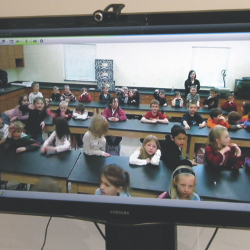No CrossRef data available.
Article contents
Using technology to enhance K–12 outreach in materials science
Published online by Cambridge University Press: 27 April 2011
Abstract

Most K–12 outreach programs worldwide within materials science and beyond rely on scientists visiting K–12 classrooms and assisting teachers with instruction and development of classroom materials, as well as developing on-site professional development workshops. Due to the limited time materials scientists and teachers have available for participating in K–12 outreach programs, more creative approaches are necessary to accommodate the needs of a broader spectrum of teachers and students. Incorporating technology into K–12 outreach programs is one approach that can be used to overcome some of the obstacles currently faced. This article discusses different manners in which technology can be included in K–12 materials science outreach programs, such as K–12 educational software and tools as well as online professional development programs. This article also draws on broader educational technology research to identify known challenges of incorporating technology into outreach programs and possible ways to overcome such challenges.
- Type
- Research Article
- Information
- MRS Bulletin , Volume 36 , Issue 4: Addressing broader impacts through K–12 outreach in materials education , April 2011 , pp. 290 - 297
- Copyright
- Copyright © Materials Research Society 2011




